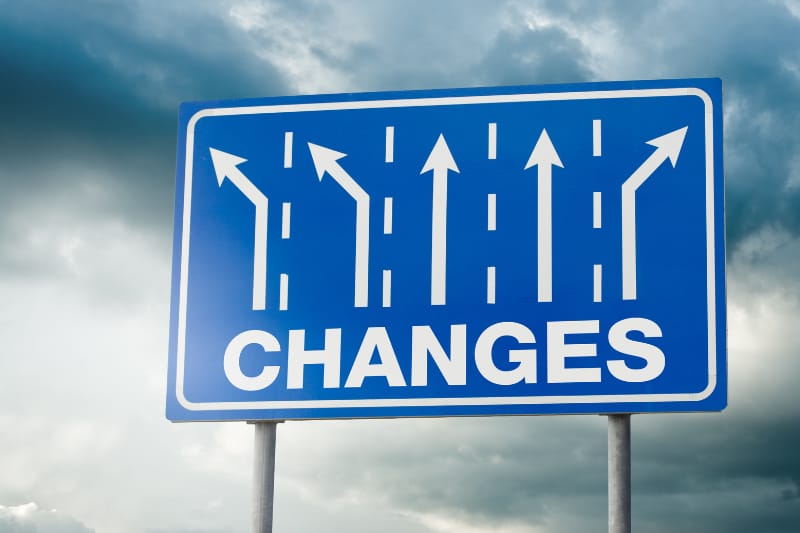Making the Jump from Desktop to Cloud Accounting (And the best time to do it)
Have you ever wondered if there is a simpler and more efficient way to move from desktop products (such as Sage50, Quickbooks, or even written records) to a cloud accounting product?
For example, if you have all your data on an old desktop software, ideally you would want to bring this over to a new platform so you can maintain records for HMRC purposes, so you’ve got historic data to ensure you can thoroughly and accurately report. Just remember that for HMRC, you will need to have six complete financial years of data.
For this kind of scenario, we would use a tool called Movemybooks (MMB). This will convert your data from desktop to cloud (it can also do cloud to cloud if needed). It can transfer as many years’ worth of data that you may need and can move over things such as departments or classes, which is your Sage and QuickBooks equivalent to Xero’s tracking. It is important to note that MMB does have some limitations, but none that would outweigh using it. It may just take a little bit of manual work to get Xero up to speed once the data has been moved – but we will cover this in more depth later.
Movemybooks costs nothing if you’re simply converting to Xero for the current financial year and one prior financial year. For example, if your year-end is December 2022 and you are converting in May 2022; you will get the December 2022 year-end plus December 2021 year-end free of charge each year. Thereafter it costs cost £72 plus VAT per financial year and there’s a one off £72 charge to move over the department/classes. You will just need a debit/credit card to complete the purchase of service.
MMB is very simple to use and gives clear guidance on how to set off the data transfer itself. However, some of the key things to remember are:
- There must be NO DATA at all in the Xero account you are transferring the data to
- You must have the same year-end date per the desktop software in Xero
Once converted, Farnell Clarke & MMB would always recommend you complete various reconciliations back to the source data.
Reconciliations
We would then reconcile back to some key reports. These reports include profit and loss and balance sheet for the current year and last final year-end, debtors and creditors, bank reconciliations, and VAT.
If you have bank accounts, make sure you reconcile all your transactions, except any outstanding lodgements – this should agree to the last balance reconciled to.
If you have a credit card you will need to create a new bank account within Xero and ensure that it’s a credit card “type”, so that the bank feeds will connect. Once set up you can then transfer the balance from the old credit card account for the opening balance.
You will need to follow the same steps as taken for the credit card (above) if you have foreign currency bank accounts, not only to connect bank feeds but also to get the outstanding lodgements and opening balance into the right currency. Note you need a premium Xero subscription for this.
VAT returns will then need to be checked. Run a new period and compare that to the open period on the desktop – the main reason it will not agree in box 1 and 4 is because of late claims, but you can simply adjust the boxes with supporting documents.
Get your fixed assets setup either manually (if it’s only a few assets) or import using Xero’s template for larger registers.
Xero setup
This is just basic settings but it’s all part of the process:
- Ensure all settings are reviewed and tailored to your business
- Ensure your invoice layout with credit terms, bank details, and logo are showing
- Check the email settings to make sure that the emails are coming from the correct address (put in your account @ instead of your individual email for example)
- Make sure that the email templates reflect your branding and tone
- Ensure the next invoice number will be in sequence
- Invite your team with the correct access rights
- Explore GoCardless for direct debits or credit card providers such as Stripe or PayPal and then simply add a pay now to your invoices – this allows the option of getting paid quicker
- Check out what additional apps could help your finance system become even more supercharged
Now let’s look at the limitations – as we have noted, where these have come up they have not been a deal breaker and should not be a barrier for moving to products such as Xero.
You just need to be aware that the following will not be transferred over to Xero as part of the data transfer:
- Purchase orders
- Sales orders
- Stock control
- Foreign currency (see above) – this will also impact your debtors and creditors – if you have FOREX transactions outstanding you will want to convert by manually editing each transaction to their original currency
Firstly, let’s address sales and purchase orders. You will need to run a report on all your open orders and manually create them within Xero. If you use stock control, you will need to download a product list and use the templates import function into Xero with the opening stock position.
Xero has the functionality of purchase orders, quotes, stock management etc. Do we recommend them? 99% of the time the answer is NO! Especially where the business is established and needs strong control and approvals. This is not a fault of Xero this is the BEAUTY of it. In a later blog post we will discuss the amazing opportunities of automation, strengthening efficiencies and bringing in strong controls.
When is the best time to move to cloud-based accounting?
You can move your data using Move My Books at any point during the financial year or VAT cycle.
The only thing that you need to be aware of is ensuring that there is not too much downtime for the accounts team, or if sales still need to be issued, you will just have to recreate them in Xero.
We often hear people say, “I need to tidy up my data”, and we would still encourage you to do the data transfer and to complete the tidy up within Xero, as there are some great tools such as “find and recode” and “remove and redo” that will make it a slick process.
Other people may say that they’d like to wait until the year-end accounts is complete – again this should not hold it up as you can add your year-end accountant, your current bookkeeper and finance team, so everyone is working on the one dataset, ensuring data integrity and up to date balances.
Under what scenarios will Movemybooks not work?
If your desktop dataset is too out of date, incomplete or inaccurate, Movemybooks may not work for you. In this scenario we would choose a convenient spot where we can enter in opening balances.
Where we have seen that the dataset is not good enough to be converted using MMB, you can still use customer, supplier or inventory items exports which you can then easily import into Xero as a CSV.
Have you been using Excel to maintain your data records?
Ideally, we would like to bring in opening balances as at the last finalised year end, set up the bank feed and import any historic bank transactions, simply and easily using Dext to process your bills/receipts and sales invoices. Your sales could have been issued as cash receipts or Word documents – if so, no worries!
Here at Farnell Clarke, we offer this service to remove the hassle for you. Please do let us know if this is something you are interested in, and we would be happy to talk it through with you. Get in touch with us here.



